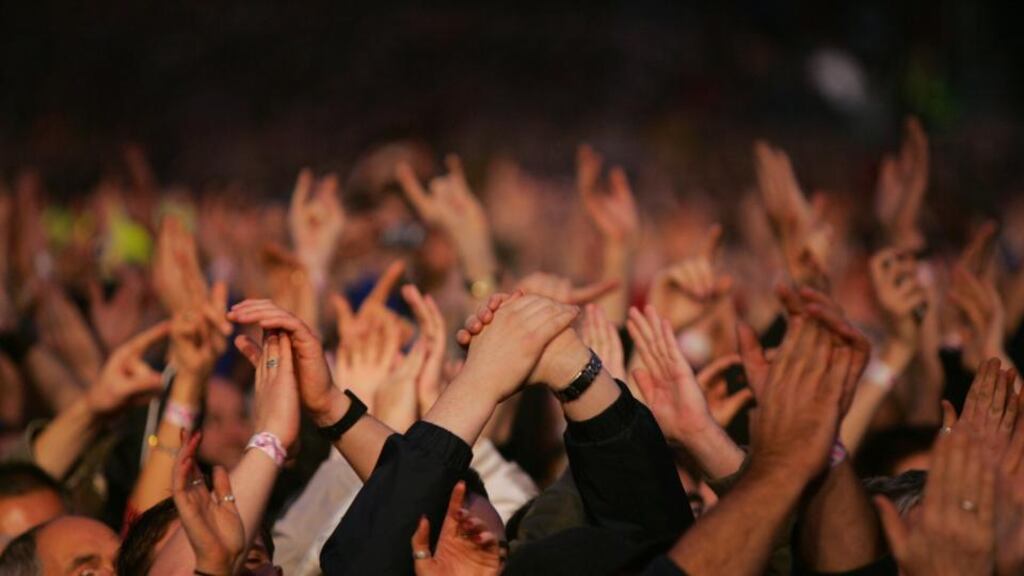What’s the sound of one hand clapping? No, I don’t know either. But whenever I’m at a certain kind of music concert, and the person beside me starts clapping along – with both hands – I often find myself fantasising about ways to solve the famous Buddhist riddle by, for example, handcuffing one of the person’s wrists to the leg of a chair.
When I say a certain kind of music, I mean the kind that has any subtlety, emotional or otherwise.
There are of course musicians who welcome clapping, and even invite the audience to clap. But when that happens, you can be sure that the music will have a simple, regular beat from beginning to end, and a maximum of one mood – uncomplicated happiness.
Where the problem (or my problem, anyway) arises is when there are changes of pace or tone. Or even where there aren’t, but it’s one of tunes where any clapping needs be on the off-beat – a skill surprisingly few people have acquired.
What set me thinking about this again was a TV repeat of last year’s “Ceiliúradh” (from the Irish, meaning “high-class hooley”) at the Royal Albert Hall in London.
Marking President Michael D Higgins’s historic state visit, the event was a kind of Republican Variety Performance, although there was royalty in attendance too. And it was clearly a night of high emotion for all involved.
But you probably had to be there, because on television at least, it made awkward viewing. The sound was a bit ropey, for one thing. Also, some of the on-stage sing-songs could have benefited from a tighter rein – especially a version of the classic jail ballad, The Auld Triangle, which went on longer than some actual prison sentences.
Beat
And of course there was a lot of audience clapping – none of it quite in time with the music. In part this could be blamed on the venue. The Royal Albert Hall is about half the size of Louth. So the people at the back may have thought they were clapping to the beat, but by the time the beat reached them and then their claps got back to the stage, there was a three-second delay.
The situation reached near-tragic proportions during what should have been the climax of the concert – a performance by traditional supergroup The Gloaming of their oddly named “Opening Set”. It’s more of a show-stopping set, really – a 16-minute epic that starts with a haunting slow air, then moves through a “slip-jig”, then a non-slip jig and several reels, to a frenetic climax.
En route, it has as many mood changes as the Irish weather. The low skies and Atlantic mist of the opening are so lonely they make you want to slit your wrists. But then the gloom lifts and the sun peers jauntily from behind the clouds, playing hide and seek for a while.
After that, gradually, the temperatures rise, and although still saddened by harsh experience, Irish hearts rise with them.
But wait – here come some dark clouds again (Thomas Bartlet’s jazz piano). And for a while the outlook is once more uncertain, until the fiddles and guitar blow the clouds away for good.
Then the skies turn blue, Irish optimism is unrestrained, and it’s time to throw off the shackles of history, dancing for joy and to hell with the dresser.
Unfortunately, the clapping skills of your average audience are just not up to the challenge of keeping time with that rate of plot development, never mind the key changes involved. So, speaking of wrists, half way though the slip jig, I was having fantasies about handcuffing several thousand of them to the legs of their Albert Hall chairs.
Now, I realise there’s a deep-seated human need at work here somewhere, and I’m not unsympathetic. I’ve seen the argument advanced, in all seriousness, that the urge to clap along with music is a form of sublimated dancing, filling a gap in cultures where dancing was traditionally discouraged.
Musical mood
But surely toe-tapping is a better outlet for such frustrated urges. It’s also more discreet (unless you’re wearing clogs). And if the musical mood changes, crucially, it’s easier to stop.
That’s part of the problem with launching a handclap. Like a Mexican wave, it’s a very public initiative. In the event of your team then conceding a goal, or the musicians suddenly introducing a sad note, it can be embarrassing to put your hands down again. For clappers, at least, the tendency is to carry on grimly with the original plan, and hope the performers eventually catch up.
@FrankmcnallyIT










